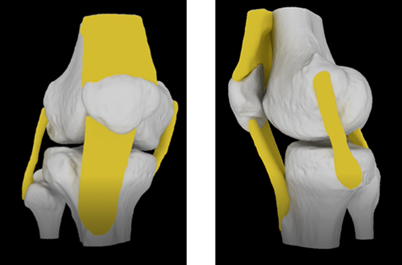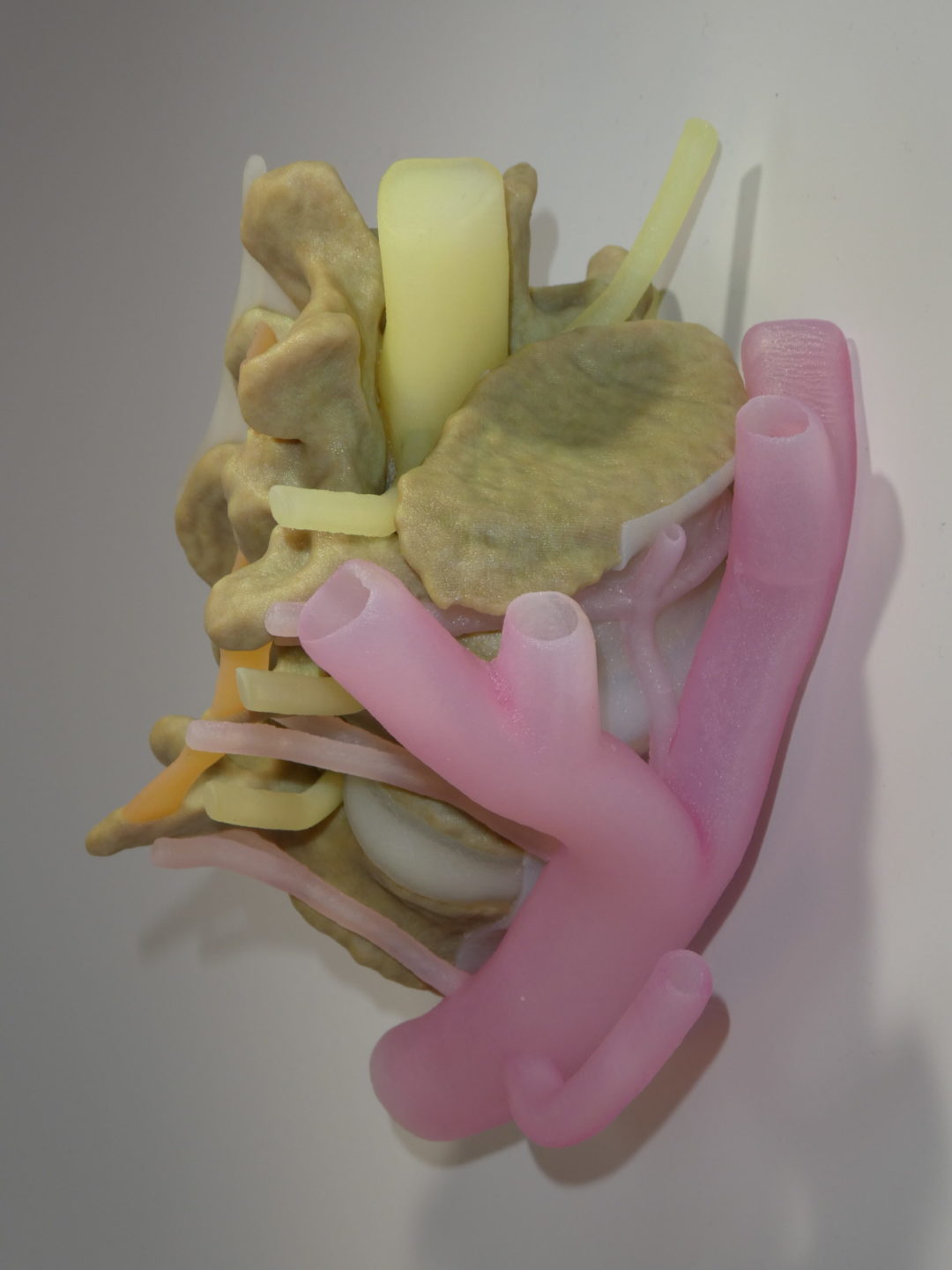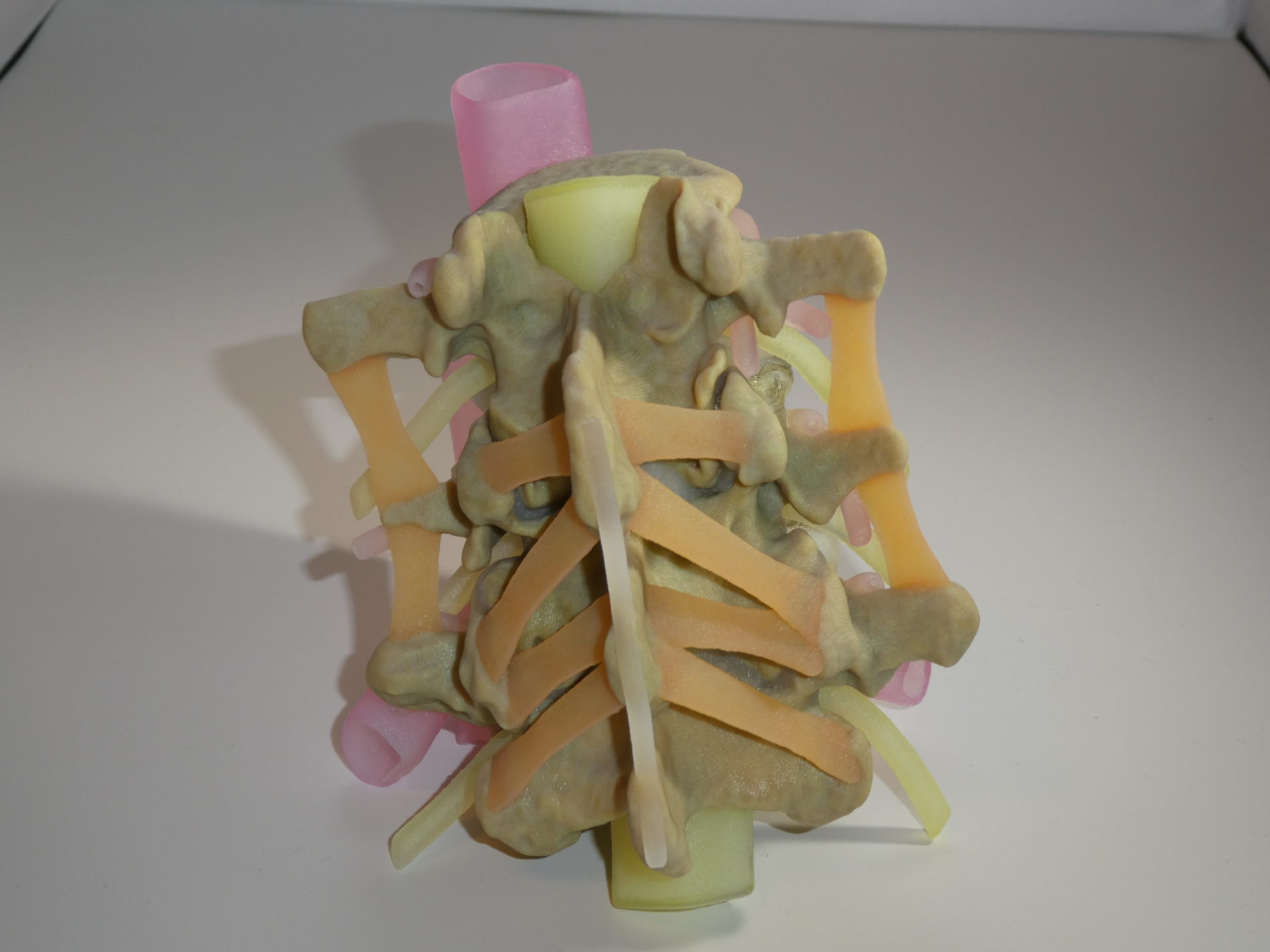SPINE-Train, 3D printed simulators for spine surgery training
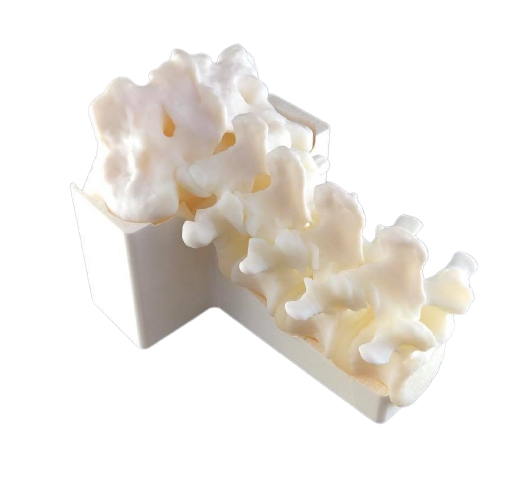
“3DP is a promising improvement for a routine application in different stages of spine surgery such as preoperative planning, surgical simulations, patient-clinician communication, intraoperative guidance, and even implantable devices.”
1. Senkoylu A, Daldal I, Cetinkaya M. 3D printing and spine surgery. Journal of Orthopaedic Surgery. May 2020. doi:10.1177/2309499020927081
Composition of SPINE-Train simulators
SPINE-Train is a range of simulators representing the anatomy of the spine meeting various needs such as enhancing product demonstrations, assisting in learning anatomy and optimizing practitioner training especially for TLIF (minimally invasive posterior lumbar arthrodesis surgery), pedicle screw placement etc.
Thanks to our expertise in the biomedical field and our state-of-the-art 3D printers, the models present an anatomical realism as well as a sensory feedback very close to the real one thanks to biomimetic materials of the region of interest.
There are currently 3 SPINE-Train models:
The elements included in this model:
- L3, L4, L5
- Aorta
- Zygapophyseal Capsules
- Intervertebral discs
- Dural sac
- Interspinous ligaments
- Yellow ligaments
- Supra-spinous ligament
- Muscles
- Anterior longitudinal ligament
- Posterior longitudinal ligament
The elements included in this model:
- L2, L3, L4, L5 with a distinction between the cortical and cancellous parts
- Intervertebral discs
This model is available with or without the sacrum. Simulation support is available for the model with sacrum.
The elements included in this model:
- Skin
- Superficial tissues (Muscle, fat, fascia)
- Bone structures (L2,L3,L4,L5,S1) with distinction between cortical bone and trabecular bone
- Spinal nerves
- Spinal canal
- Intervertebral disc
- Ligamentary structures (supraspinous, supraspinous, yellow, anterior and posterior longitudinal ligament)
Practitioners may perform the following procedures:
- Incision of superficial tissues
- Intervertebral disc resection
- Placement of interbody cage
- Insertion of pedicle screws
- Vertebral realignment
Technical specifics of 3D surgery simulators
a complete and realistic range of simulators
Build custom models from your specifications or patient data.
Examples: nerve deletion, minimal feasible adaptations, adaptation to patient’s L4/L5, etc.
Practice on multi-material simulators.
For an accurate rendering that respects the texture of each human body tissue.
Create your own models
Want to design your own SPINE-Train model? Contact us!
Discover our range of surgical simulators for different specialties.
Photo, video, & article resources
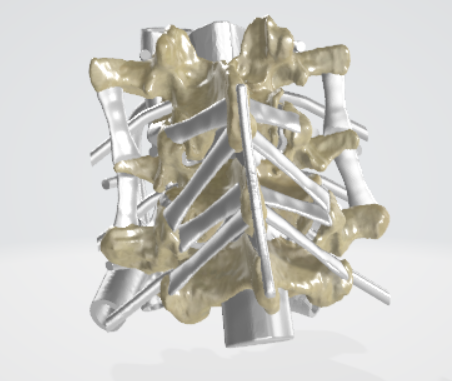
Frequently asked questions
Yes, opt for customized products: it is also possible to develop simulators on request.
Send us your project to contact@bone3d.com and we will answer you as soon as possible!
It depends on the type of technology we use for printing.
Currently our machine with the largest capacity is the F770 from Stratasys. It allows us to print in one time parts of dimensions 61x61x100 cm!
The design of our 3D printed products is done in 3 key steps:
1) We always start with a literature review of the field we are working on (orthopedics, cardiovascular,..)
2) We perform mechanical tests and numerical modeling to complete our literature review
3) We rely on feedback from our expert practitioners to ensure that our products meet their needs perfectly!
It depends on the equipment you have on site and how you want to use it.
If our experts are trained in the use of this type of technology, we will be happy to help you design the parts that are missing 😀
